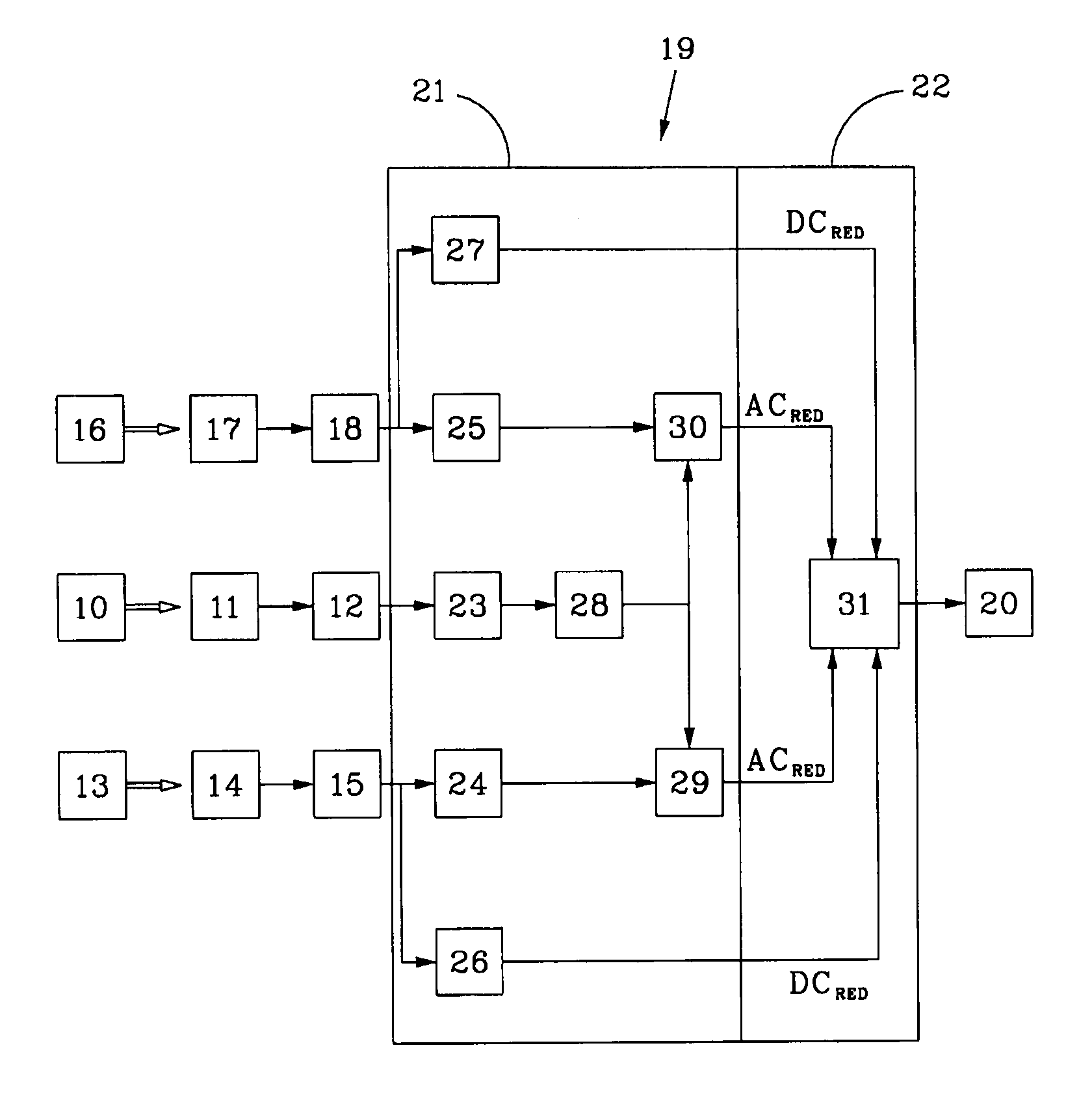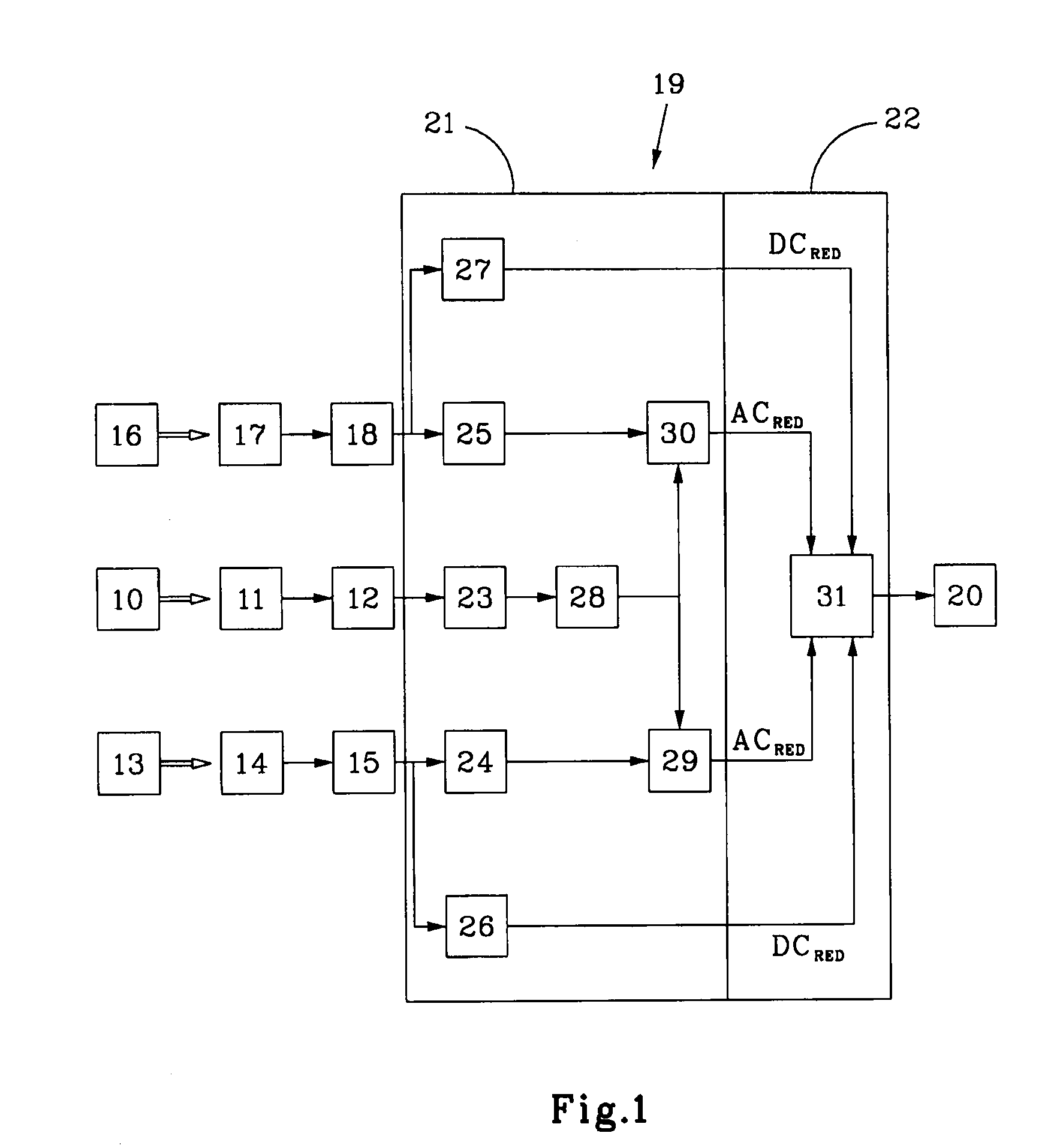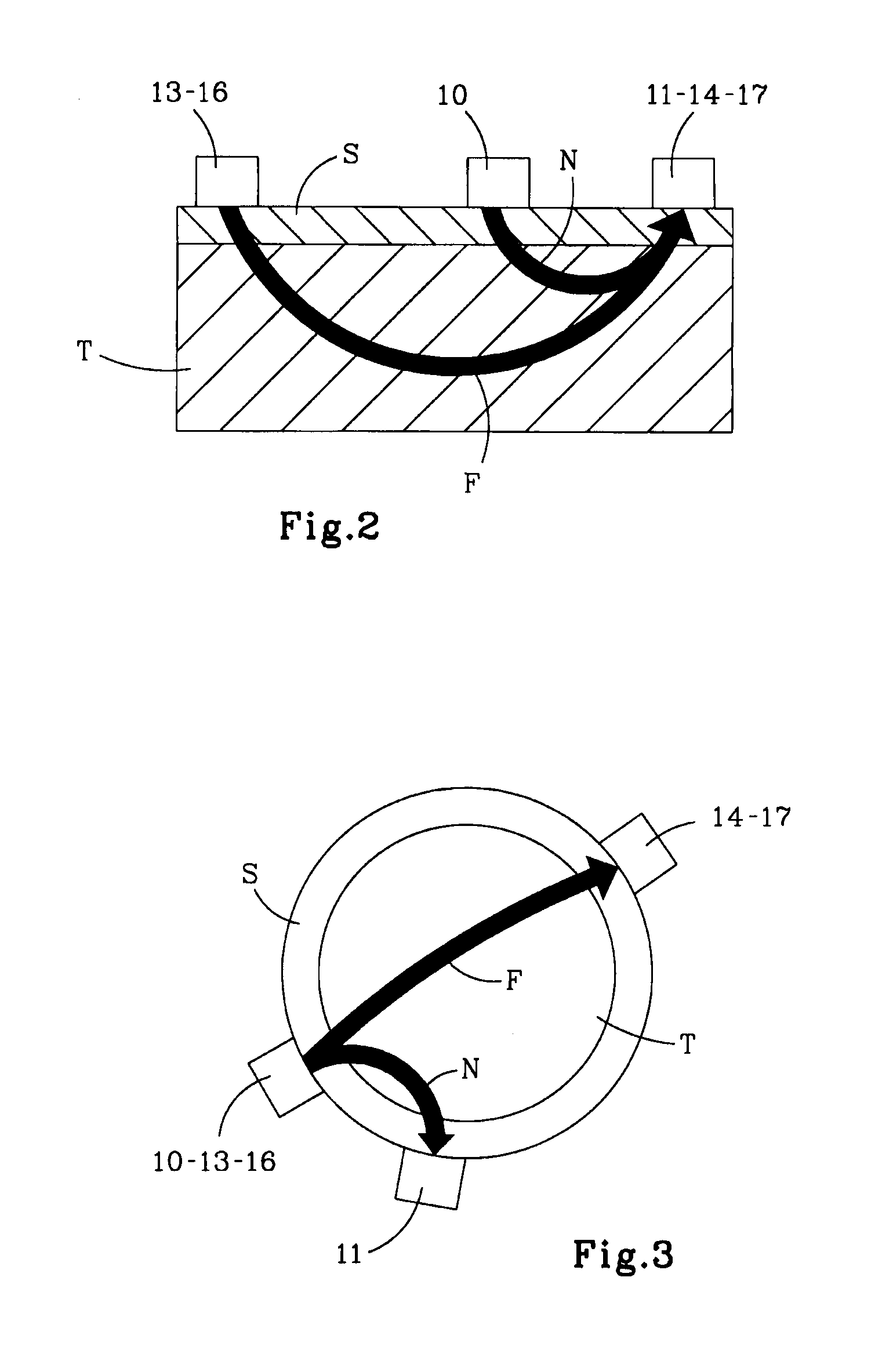Device for monitoring arterial oxygen saturation
a technology of pulsatile light and oximetry, which is applied in the field of optical-based pulse oximetry, can solve the problems of troublesome detection of pulsatile light, drastic reduction of received light power, and severe limitation of ambulatory use, and achieve the effect of reducing fixation constraints
- Summary
- Abstract
- Description
- Claims
- Application Information
AI Technical Summary
Benefits of technology
Problems solved by technology
Method used
Image
Examples
Embodiment Construction
[0029]When performing reflectance pulse oximetry, two main reasons justify the increase of the physical separation between optical parts (LEDs and photo-diode).[0030]1. In any pulse oximetry probe, the relative pulse amplitude is a good indicator of the quality of the probe placement. This quality factor, usually depicted as Perfusion Index (PI), is also interpreted as a quantification of the width of the vascular bed traversed by a light beam. It was demonstrated (Y. Mendelson, Noninvasive Pulse Oximetry Utilizing Skin Reflectance Photoplethysmography, IEEE Transactions on Biomedical Engineering, Vol 35, No 10, 1988) that, given a reflectance probe, the PI is linearly increasing with the increase of the physical separation between the optical parts.[0031]2. The probability of direct-light being short-cut from the light sources to the light detector by scattering in the outer part of the skin or / and successive reflection in the probe-skin interface is reduced when both optical eleme...
PUM
 Login to View More
Login to View More Abstract
Description
Claims
Application Information
 Login to View More
Login to View More - R&D
- Intellectual Property
- Life Sciences
- Materials
- Tech Scout
- Unparalleled Data Quality
- Higher Quality Content
- 60% Fewer Hallucinations
Browse by: Latest US Patents, China's latest patents, Technical Efficacy Thesaurus, Application Domain, Technology Topic, Popular Technical Reports.
© 2025 PatSnap. All rights reserved.Legal|Privacy policy|Modern Slavery Act Transparency Statement|Sitemap|About US| Contact US: help@patsnap.com



